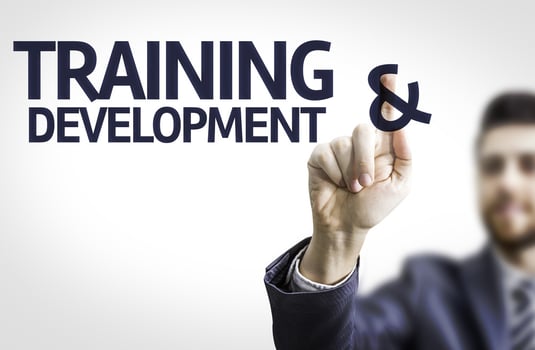
McKinsey's ‘The State of Organizations 2023’ report states, "To achieve a competitive advantage, organizations need to build institutional capabilities — an integrated set of people, processes, and technology that enables them to perform consistently better than competitors.”
However, many businesses struggle to blend these elements effectively. Outdated technology, disjointed processes, and isolated teams often hold them back. Consequently, they may fail to meet customer needs or keep up with competitors.
This article will focus on improving your processes to help you achieve lasting success. We’ll provide four tips for boosting organizational effectiveness through operational optimization.
Let’s begin.
Tip 1: Streamlining workflow processes

Waste and redundancy are two of the greatest barriers to organizational efficiency. A streamlined workflow solves this problem by prudently using time and resources. Here are key processes to reaching that goal:
- Document existing workflows. This could involve creating flowcharts or diagrams illustrating each step from start to finish.
- Identify bottlenecks. These are areas where work tends to get stuck or delayed. This could be due to a lack of resources, inefficient procedures, or communication breakdowns.
- Automate manual and repetitive tasks and processes: Connect systems with software like CRMs and APIs to avoid entering the same data multiple times and use an easy-to-use online PDF Editor like Lumin to manage workflows between project teams smoothly. This saves time, reduces errors, and promotes consistency.
- Standardize processes and protocols: Clear guidelines make processes simpler and minimize errors. This helps employees understand and follow workflows better and ensures consistency for regular tasks.
- Jumpstart projects with a template: Lumin, for example, provides a convenient way to begin your tasks through Template Discovery. This feature contains a range of templates and fillable PDF forms categorized by industry or task.
- Centralize tasks and processes: Jumping between communication, task management, collaboration, and CRM tools can disrupt focus and become tiring. It may also lead to communication breakdowns and delays.
Instead, try splitting, merging, compressing, or reducing tasks and files as needed into more manageable sizes. Then, securely store them in a centralized place like the cloud for easy access and reference by authorized users. This saves time and keeps everyone in the loop.
Tip 2: Enhancing communication and collaboration

Good teamwork boosts productivity and helps reach goals quicker. Here are tips to adopt in your organization:
- Specify the accepted communication channels: Be clear on the standard channels for official correspondence. Typically, this should include email, project management tools, and one-on-one meetings.
- Promote open communication: Consciously create an environment where everyone feels comfortable sharing ideas and asking questions at work. Encourage active listening, group discussions, and friendly conversations between managers and team members.
- Explore project collaboration tools: Investment in project management platforms like Slack, document-sharing systems like free PDF editing software, and virtual meeting software like Zoom will significantly enhance teamwork and information sharing.
- Walk the talk: As a manager, don’t just outline guidelines and etiquette for groups and one-on-one communications; demonstrate them in your day-to-day activities.
Tip 3: Investing in employee training and development

According to Workplace Intelligence, 78% of employees believe their company’s training programs have helped them in the last two years. Here are the benefits of staff training and development:
- Improved performance: Investing in training is essential for employees to succeed, whether it's technical skills, leadership training, or soft skills development. If your team is spread out, online training works, too.
A study found that around 80% of experts think online training is better than in-person training. Don't have digital training materials? No problem. Use OCR to convert PDFs into editable files. Then, put them online for easy access by trainees.
- Adaptability: Organizations that want to stay competitive value workers' ability to quickly adapt to new, more effective technologies, processes, and challenges. Regular staff training helps achieve this, as employees are kept up-to-date with industry trends and developments, making them more resilient and efficient in their roles.
- Talent development: Investing in staff learning and development sessions helps build a strong talent pipeline for succession planning. This makes it easier for the organization’s management to identify and nurture promising talents.
- Engagement & competitive advantage: Workplace opportunities to learn and grow are key to a happy and engaged workforce. This is a major contributor to an organization’s competitiveness in the marketplace. In fact, 92% of workers believe workplace training positively impacts their engagement on the job, and 45% said it would make them stay longer in the organization.
To make the training sessions more interactive and beneficial, consider using annotation and highlighter tools for feedback, comments, and assignment grading.
Tip 4: Utilizing data-driven decision-making

In today's data-rich environment, harnessing the power of data is vital for making informed decisions that drive organizational success. Here's how to leverage data-driven decision-making effectively:
- Collect relevant data: Find important measures (KPIs) and collect data using forms that match your goals. Make various short surveys and politely ask staff, customers, and others to fill out the PDF forms promptly. These may cover sales, customer opinions, website stats, or operational data.
- Analyze data effectively: Once you've signed a PDF survey form to make it valid (Online PDF editors provide simple guidelines on how to sign a PDF form), use data analysis tools and techniques to extract actionable insights from the raw data. Look for patterns, trends, and correlations that can inform your decision-making process.
- Make data-driven decisions: Drive your business decisions with empirical evidence rather than intuition or gut feeling. This eliminates bias and allows you to make more objective decisions. The organization ultimately benefits in the short or long term.
- Implement feedback loops: Continuously monitor and evaluate the outcomes of your decisions. Use feedback to refine your strategies and improve future decision-making processes.
- Make actionable data accessible: Encourage a data-driven culture where employees can access relevant data. This way, they’re empowered to use it to inform their decisions. Don’t forget to provide the needed training and support to help them develop data literacy skills.
Conclusion
Optimizing organizational effectiveness demands a holistic approach. Integrating efficient and automated workflows, staff training, and data-driven decisions, complemented by document handling tools like PDF editors or modifiers, will help your organization stay ahead in its niche market and ensure sustained success.